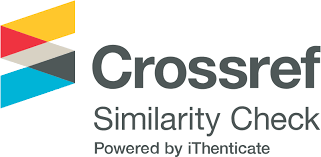The Difficulties That Encounter Monolinguals Compared To Bilinguals In A Second Language Classroom
DOI:
https://doi.org/10.59743/Keywords:
Language, Bilingual, Monolingual, Second language, Native LanguageAbstract
This study reported here focused on the difficulties that monolingual compared to bilingual learner in English language classrooms. It primarily aimed to determine the difficulties that monolinguals in English language learning compared to bilinguals, it also, aimed to establish the difference between these two types of learners, and it concluded with solutions for limiting these differences. The research method used in this research was a mixed method approach, namely qualitative and quantitative. Data collection in this research used quantitative questionnaires and qualitative interviews. The sample selection for this research used a purposive sampling technique. The participants in this research for quantitative data were students whose age ranges from 15 years old in property school to 23 in college. Some of the participants were from Human Sciences College and several others were from a property school called Safwat Almaaref and English teachers who teach at Al Asmariya University. Data was analyzed using SPSS and thematic analysis. The findings of the study revealed that most monolingual English students have difficulties and problems with the overall learning of English, which are due to several factors that delay their process of learning English. The study concluded that bilinguals are better at English language learning because they can code-switch between languages without either language being affected. While monolinguals only rely on their native language. To bridge the gap between bilinguals and monolinguals, monolinguals could get more exposed to the English language and culture.
Downloads
References
Bhattacherjee, A. (2012). Social Science Research: Principles, Methods, and Practices. Textbooks Collection. Book 3.
De Houwer, A. (1999). Two or More Languages in Early Childhood: Some General Points and Practical Recommendations. ERIC Digest.
de Lange, C. (2012, June 11). Educators once opposed raising bilingual children. Experts now say it’s beneficial. Www.Washingtonpost.com. Ben Wiseman. Retrieved January 29, 2022, from https://www.washingtonpost.com/?tid=home_link_ss
Genesee, F. (2008). Dual language in the global village. Pathways to Multilingualism: Evolving Perspectives on Immersion Education. 22-45.
Hammer, C.S., Hoff, E., Uchikoshi, Y., Gillanders, C., Castro, D., Sandilos, L.E. (2014). The Language and Literacy Development of Young Dual Language Learners: A Critical Review. Early Child Res Q. 2014 4th Quarter;29(4):715-733. doi: 10.1016/j.ecresq.2014.05.008. PMID: 25878395; PMCID: PMC4394382.
Klein, W., & Perdue, C. (1997). The Basic Variety (or: Couldn’t natural languages be much simpler?). Second Language Research, 13(4), 301–347. http://www.jstor.org/stable/43104550
Muftah, M. (2022). Impact of social media on learning English language during the COVID-19 pandemic. PSU Research Review, Vol. ahead-of-print No. ahead-of-print. https://doi.org/10.1108/PRR-10-2021-0060
Nassaji, H. (2015). Qualitative and descriptive research: Data type versus data analysis. Language Teaching Research, 19, 129-132. 10.1177/1362168815572747.
Nor, N. M., & Ab Rashid, R. (2018). A review of theoretical perspectives on language learning and acquisition. Kasetsart Journal of Social Sciences, 39(1), 161-167.
Nowell, L. S., Norris, J. M., White, D. E., & Moules, N. J. (2017). Thematic Analysis. International Journal of Qualitative Methods. https://doi.org/10.1177/1609406917733847
Prior, A., & Gollan, T. H. (2011). Good language-switchers are good task-switchers: Evidence from Spanish–English and Mandarin–English bilinguals. Journal of the International Neuropsychological Society, 17(4), 682-691.
Saville-Troike, Muriel & Barto, Karen. (2018). The Linguistics of Second Language Acquisition. 10.1017/9781316569832.004.
Sebastian-Galles, N. (2010). Bilingual language acquisition: where does the difference lie? Human Development, 53(5), 245-255.
Selinker, L. (1972). Interlanguage. Product Information International Review of Applied Linguistics in Language Teaching, 10, 209-241. http://dx.doi.org/10.1515/iral.1972.10.1-4.209
Stefánsson, E. G. (2013). Second language acquisition: The effect of age and motivation (Doctoral dissertation).
Szczegielniak, A. (2012). To be published in: Information Structure, Agreement and CP Degree Phrase Raising in Relative Clauses 1.
Taherdoost, H. (2021). Data Collection Methods and Tools for Research; A Step-by-Step Guide to Choose Data Collection Technique for Academic and Business Research Projects. International Journal of Academic Research in Management (IJARM), 10 (1), 10-38.
Tenny, S., Brannan, J.M., Brannan, G.D. (2022). Qualitative Study. In: StatPearls. Treasure Island (FL): StatPearls Publishing. https://www.ncbi.nlm.nih.gov/books/NBK470395/
Downloads
Published
Issue
Section
Categories
License
Copyright (c) 2024 Journal of the Academic Forum

This work is licensed under a Creative Commons Attribution-NonCommercial-ShareAlike 4.0 International License.




